I took a 500-mile trip in an EV — but range anxiety was the least of my problems
Short range EVs aren't made for long distance, but it's other things that cause the problems
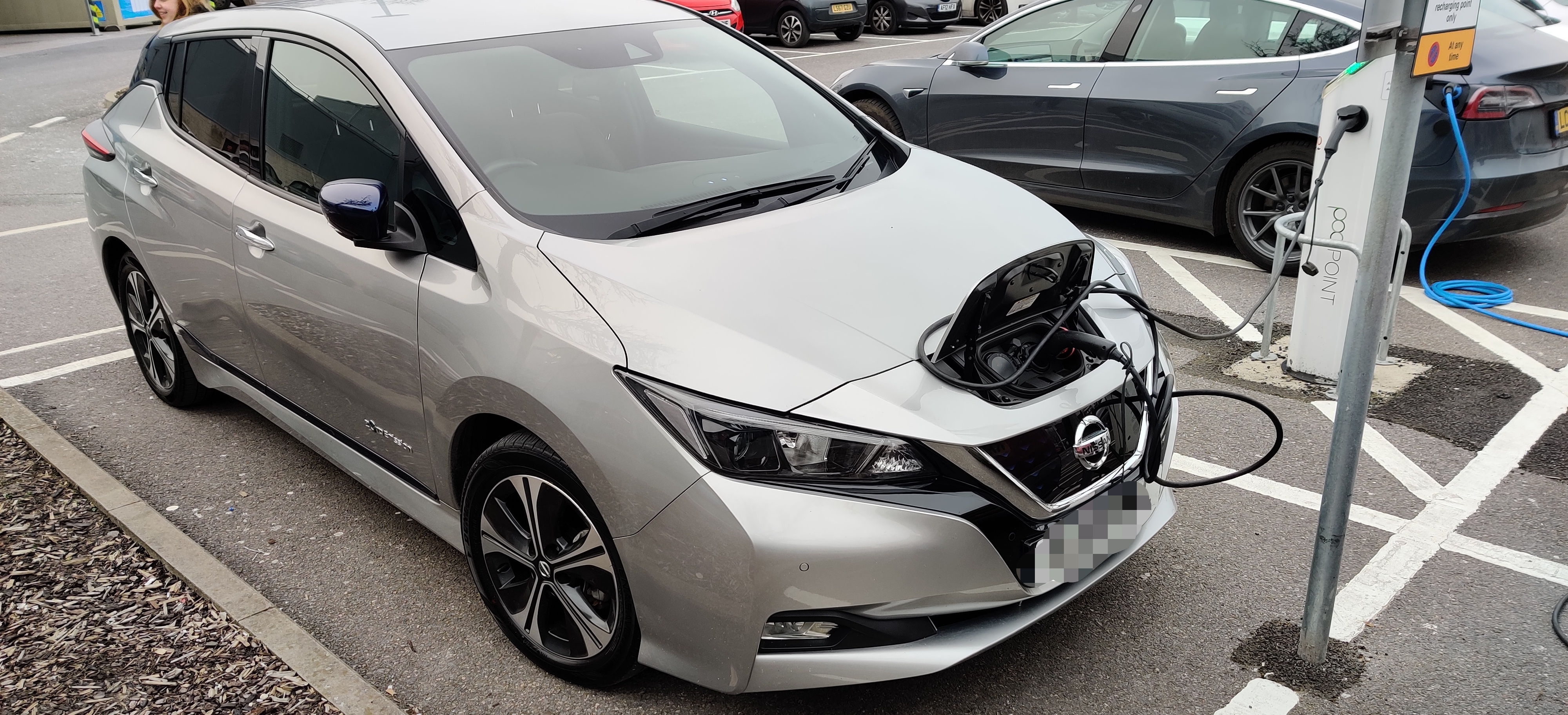
Driving long distances in an electric car isn’t as bad as some of the naysayers might have you think. Provided, of course, the car in question has a solid range estimate. But what if your car doesn’t have particularly good range? What if your electric car is just like mine?
I am currently the owner of a Nissan Leaf with a 40 kWH battery. It’s the smallest battery Nissan currently offers in a Leaf, and has an EPA-tested range of 149 miles. The Nissan Leaf is a perfectly good city car, with a few questionable hardware choices, but it is categorically not built for road trips. Especially with high-speed highway driving.
It’s a fact that was living rent-free at the front of my mind as I prepared to take the car on a road trip. Because the choice was either that, pay about $140 to fuel my girlfriend’s car, or spend even more renting a more long-distance-friendly EV. Taking the Leaf seemed like the best option available, and now that the trip is over I still can’t decide whether I did the right thing.
Though in a move that was a surprise to me, the issue wasn’t with the fact that 40 kWh Leaf has such a short range. Forget about range anxiety — it ended up being just about everything else got in the way and made the trip significantly more stressful than it should have been.
Planning is important, especially with low range

One of the things most EV owners will know is about the importance of planning ahead. Trying to wing it is typically a recipe for disaster, especially if you have a car like the Leaf. Not only does it have relatively low range, it also utilizes a totally different DC charger than the rest of the automotive industry.
The CHAdeMO charger is Nissan's choice for the Leaf, while everyone else uses CCS. Even Tesla ditched its own proprietary charging port for CCS in the European market. The number of CHAdeMO chargers is testament to the Leaf's popularity, but they're still dwarfed by the availability of CCS — for obvious reasons. And being the minority means finding a charger can be a bigger challenge.
Some electric cars, notably Tesla, have built-in navigation systems that can take charging into account — automatically adding recharging breaks when needed. The Leaf does not do this, and means you need some outside help. One of the most reputed apps I’ve seen is A Better Route Planner (ABRP), which does all that for you.
Get instant access to breaking news, the hottest reviews, great deals and helpful tips.
My girlfriend and I were on our way north to go to a friends’ wedding. Part of this trip involved visiting my parents, because I’m a good son. And also because I had an ulterior motive.
All the dog sitters near me have been booked up for months, thanks to all the vacations families are taking in August, and they kindly agreed to watch my pup for me. They also have a hyperactive puppy, so the two could hopefully tire each other out. Unfortunately this meant a lot more driving than I had originally hoped. All in all, a round trip was going to total somewhere in the region of 500 miles. Needless to say I needed something like ABRP to try and make the experience as painless as possible. Especially after what happened the last time I drove my Leaf to a wedding.

Apps do all the hard work, so you don’t have to
At face value ABRP seems pretty great. You tell the app your exact model of car, and pump in a bunch of relevant information including how much your starting charge, how much weight you’re hauling around and your intended average speed.
ABRP is then able to calculate your battery level along the route, working out the best places to stop and how long you should stick around. It’s actually incredibly useful to know this ahead of time, whether you intend to religiously follow the app’s advice or not. I was not, or at least not when ABRP suggested I set off with less than 80% charge.
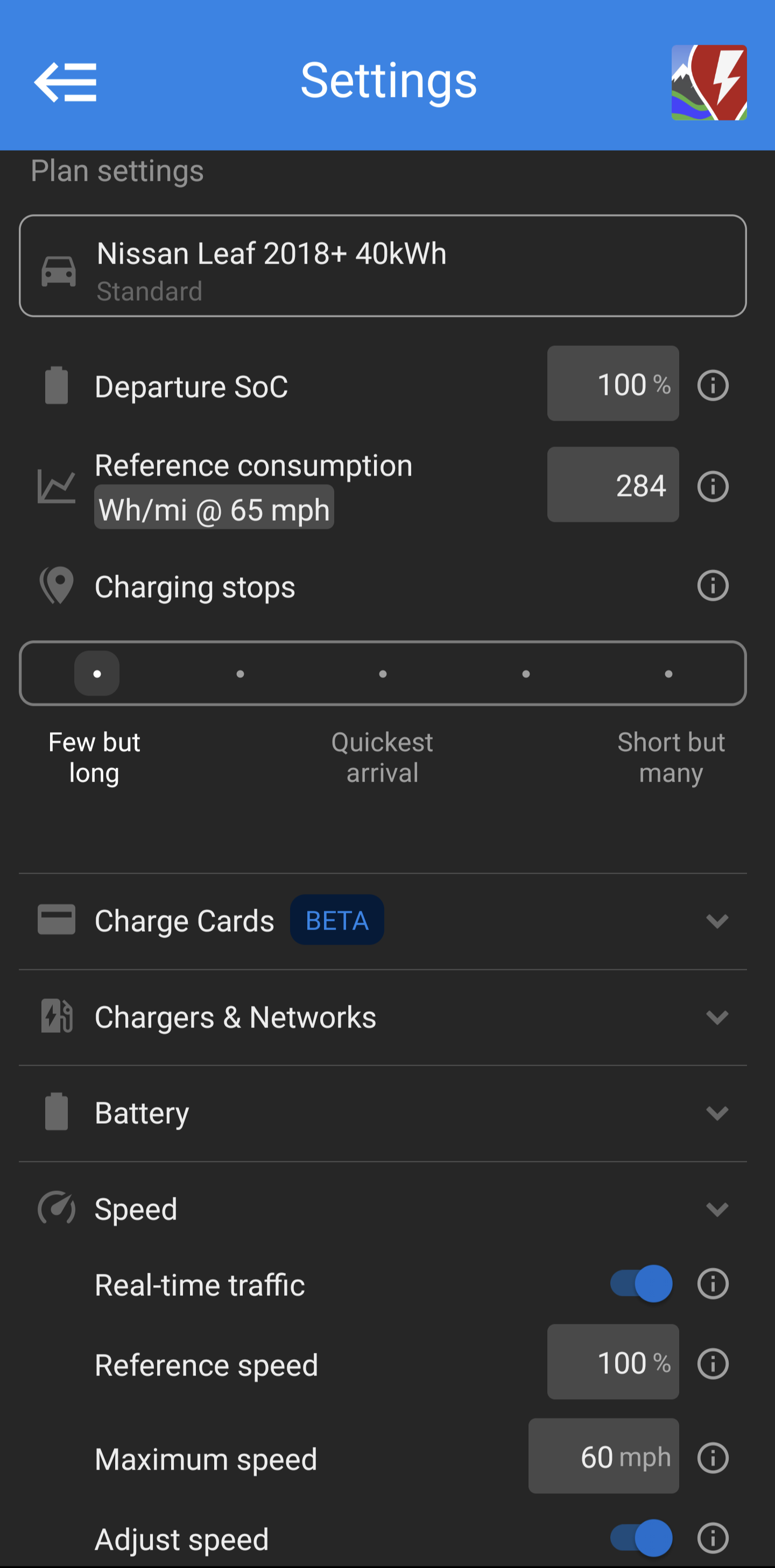
For the most part the app’s calculations were the best kind of inaccurate. In fact my battery level seemed to be declining much slower than anticipated. It’s not entirely clear if this was down to the app playing it safe, or me doing everything I could to try and maximize my range. But it did add an additional safety net to all my charging plans.
I’d even signed up for a free Premium trial, which offered extra features. Real time traffic and live charger statuses were the main one. In theory that means the app routes you round traffic and away from chargers that are currently in use. Just like the big-name navigation apps, but with extra electric car charging support.
But right from the get-go, ABRP’s chosen routes seemed a little bizarre, and that only got worse as time went on.
There’s a reason Google and Apple are the kings of navigation
Shortly after picking up my girlfriend, the directions sent me down a winding, single lane country road. I figured it was odd, but it may be a little faster or more efficient. In hindsight, that was pretty naïve of me.
A couple of hours later, after I’d thrown the app for a loop by taking the wrong exit and going on a detour through Birmingham with more traffic than I’ve ever seen outside LA, ABRP decided to take us off the highway.
This meant driving round a very winding exit, through a roundabout, and straight back on the highway. The very same highway we’d just left, only half a mile ahead. I've been thinking about it a lot, and even with the traffic that move didn't make a lick of sense.
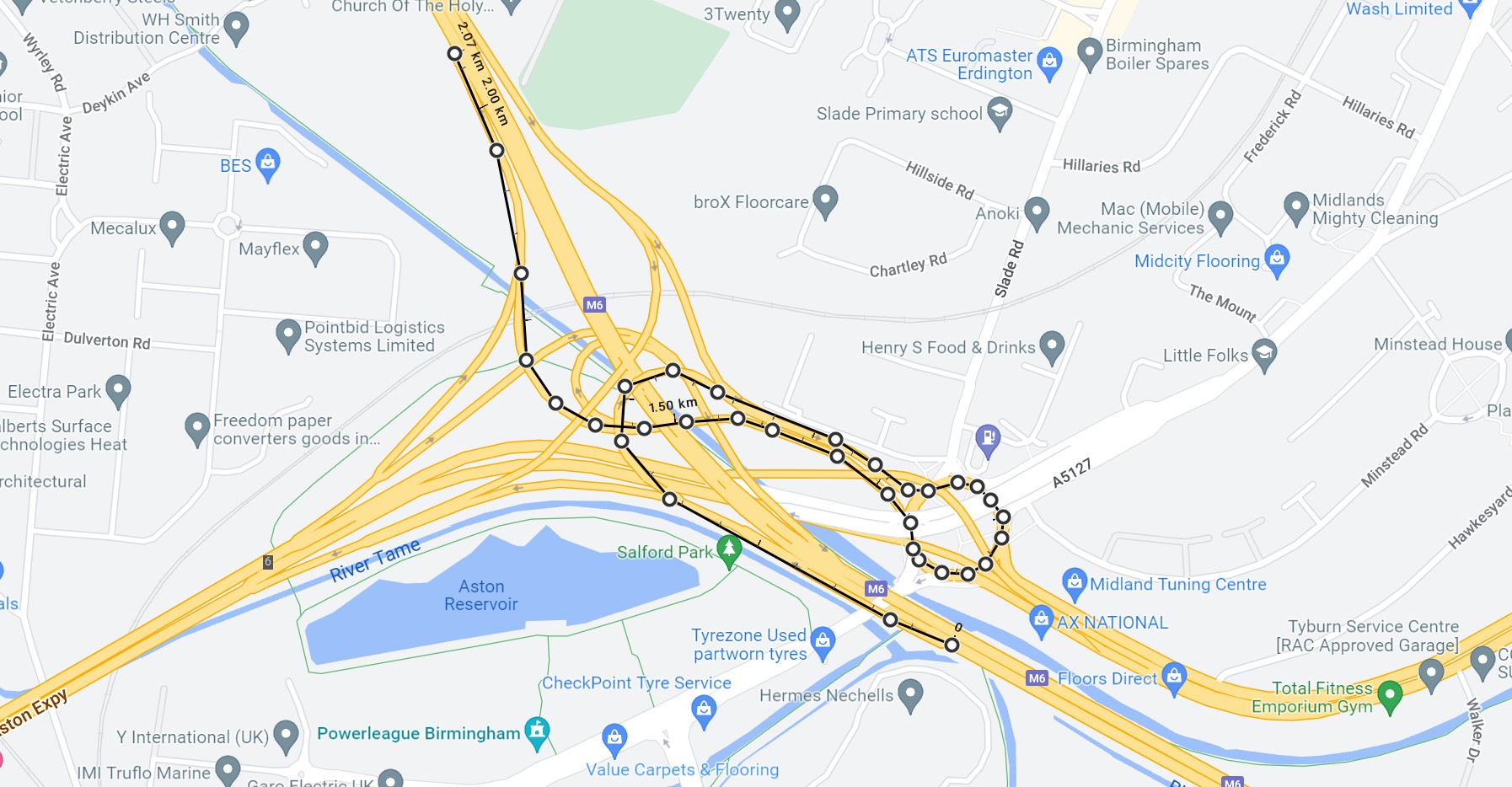
Traffic would prove to plague me for the rest of the trip — which is actually no real surprise. There’s only two major routes between South East and northern England, and the shortest one is notorious for delays. It’s not the worst traffic I’ve experienced driving this route (that honor would go to the time the highway had to shut for almost 24 hours after a fatal crash), but it is certainly in the top five.
Thankfully heavy traffic moves rather slowly, which meant I wasn’t draining my car’s battery by moving at high speeds.
Eventually I made it to my second, and final recharging stop of the day. At this point I wondered if I should ditch ABRP and punch my final destination into Google Maps. I, the fool I am, decided to stick with it.
The final straw was an hour or so later, as I approached Manchester. It’s been a long time since I lived in the North of England, and I am not entirely familiar with all the roadways, but I know that you don’t get to my hometown by heading towards Chester.
That’s 50-plus miles in the complete wrong direction, and even Google Maps agreed that I should immediately turn back on myself. Coupled with the random and totally unnecessary loop the app made me do around Birmingham, it put me off using ABRP as a navigation tool. Thankfully Google Maps got me to my parents’ house in one piece.
While I can’t fault the app’s planning, and predicting where and when I’ll need to recharge, it seriously needs to work on its routing abilities. I’d rather use Apple Maps, an app I’d previously sworn never to rely on again.
Never make assumptions about EV chargers
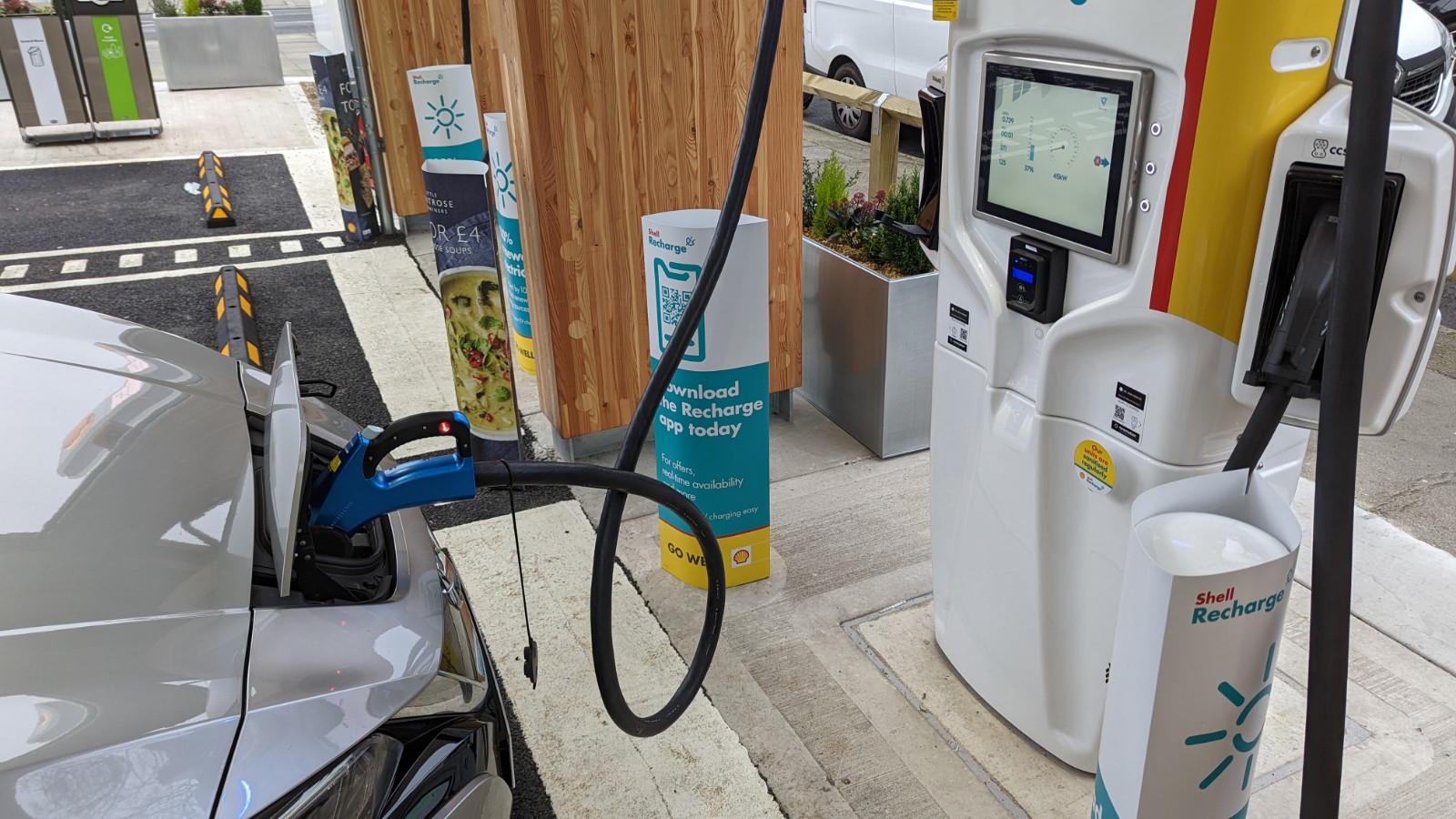
Remember how I said winging an EV road trip was a recipe for disaster? I know that because I experienced it first hand on my journey back. Though I wouldn’t have had a problem if the Leaf had the same hardware as every other electric car.
I’d had a pretty late night before my return trip, and I still had to pick up my dog from my parents. Fortunately I didn’t have to travel far, on account of them deciding that day would be perfect to visit a local country estate. Given the place was just 15 minutes away, and the lack of accessible charging facilities at and around my hotel, it meant I started the day without charging my car.
No matter, I figured, I can get back on the highway and recharge at the first rest stop. From there I can plan the rest of my route and figure out where to stop for the final charge of the trip. This proved to be the first mistake of the day.
The stop in question had two EV chargers available, and annoyingly the only one had a Leaf-friendly CHAdeMO charger was in use. I didn’t think too much of it, since the car was over 80% charged, and the driver was bundling his kids into their seats. Logically, I thought, he’d be leaving momentarily.
He was not. In fact he didn’t leave until his car hit 97% — which is a pretty dumb thing to do.
The closer your battery gets to fully charged, the slower the charging speed. Typically this drops pretty fast after 80%, and by the time you’re closing in on 100 you might as well be plugged into a wall outlet. Driving off and stopping a second time, if necessary, is a far more efficient use of your, and crucially everyone else’s, time.
Finally he leaves, I plug in and… the charger isn’t working.
I tried again, same result. And again. And a fourth time for good measure, but no joy. The CCS charging cable was perfectly functional, as Mr 97% proved, but the CHAdeMO cable was kaput.
The Leaf’s antiquated charger became a genuine liability
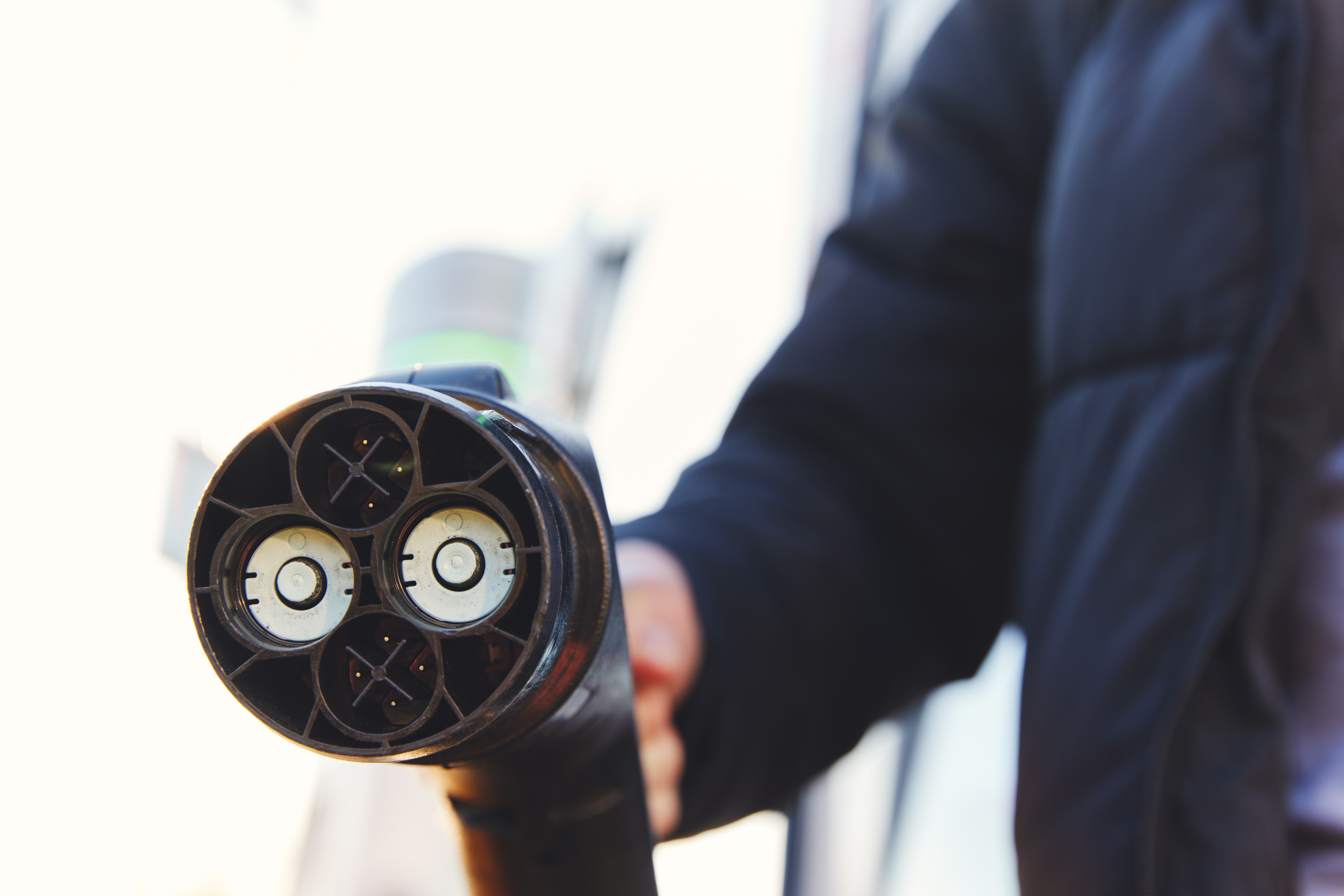
It’s at this point a little anxiety crept in. My battery was around 40% at this point, and I could really use some power. But I have no choice but to drive on, and fortunately the next rest stop is less than 15 miles down the highway.
I arrived there to find all two rapid chargers in use — including the lone CHAdeMO plug. More to the point, there’s a line of people waiting and the guy plugged in is also apparently trying to reach 100%. So again I wait.
Eventually, half an hour and one large coffee later, I finally get to plug in. With success! The car is charging, all panic is over and I can soon be on my way. Aside from the fact this charger proceeded to break down part way through the charge — leaving me with 36% overall.
Cue the panic again, except this time It’s worse because I know the next rest stop is roughly 47 miles away. The Leaf was registering around 54 miles of range, and at highway speeds it was not likely to make it there. It was also not worth the risk of turning up, running on proverbial fumes, to find yet another busted CHAdeMO charger.
ABRP was absolutely no help at this point either. While I was hoping it could find a route with a conveniently located charger that wouldn’t leave me stranded, it kept insisting I stay where I was, and try to use the busted charger. Which was absolutely no help at all.
Thankfully I was not in the middle of nowhere, and there were a few solitary chargers situated off the main highway. Each one would require a detour, but there were enough options that I wouldn’t be stranded if I came across any more busted CHAdeMO stations.
Needless to say, Nissan's decision to stick with CHAdEMO, and the shoddy infrastructure employed by Gridserve along England’s highways, was responsible for a lot of very unsavory words coming out of my mouth.
Range was never the issue

Once that power was in my battery, the rest of the trip was pretty uneventful. I had to stop off once more, at an Instavolt Hypercharger with about 20 CHAdeMO chargers — only one of which was broken. By this point my stress levels had dropped to almost normal levels.
The only actual issue I had after this stop was with my infotainment hardware. It had been on the fritz throughout the trip, occasionally crashing and rebooting, which ended up in the entire thing dying on me around 30 miles from home. But that’s another story for a different time, since I was on the home stretch and knew exactly where I was going.
Obviously I’d have preferred to make this entire journey without having to stop and wait for my battery to recharge. Heck, even a single stop when I would have normally been eating lunch would be a lot more tolerable. But I knew exactly what I was getting in for, so the performance of the car, and its battery, was no real shock to me.
Instead my problems stemmed from other things. Be it poor navigation, my own apparent inability to follow directions, or the fact an electric car is only as good as the available charging infrastructure. That last one is particularly annoying, and frankly more money needs to be spent on charging points where people are going to use them. You know, along the highway.
But the good news is that I won’t have to make this trip again. My parents are selling their house and moving south, so I have pretty-much no reason to travel to the North of England in the foreseeable future. And if I do have to go, I’ll probably just take the train. Heck, even flying with checked bags would be less problematic.
At least the trip was cheap.
Next: My car's infotainment system broke and here's an issue it highlighted about cars these days. Google Maps has a big electric car problem — here's why. Also check out the Hyundai IONIQ 6 first drive: A killer EV that delivers range and comfort, and be sure to know how you can maximize your electric car range in winter.

Tom is the Tom's Guide's UK Phones Editor, tackling the latest smartphone news and vocally expressing his opinions about upcoming features or changes. It's long way from his days as editor of Gizmodo UK, when pretty much everything was on the table. He’s usually found trying to squeeze another giant Lego set onto the shelf, draining very large cups of coffee, or complaining about how terrible his Smart TV is.
